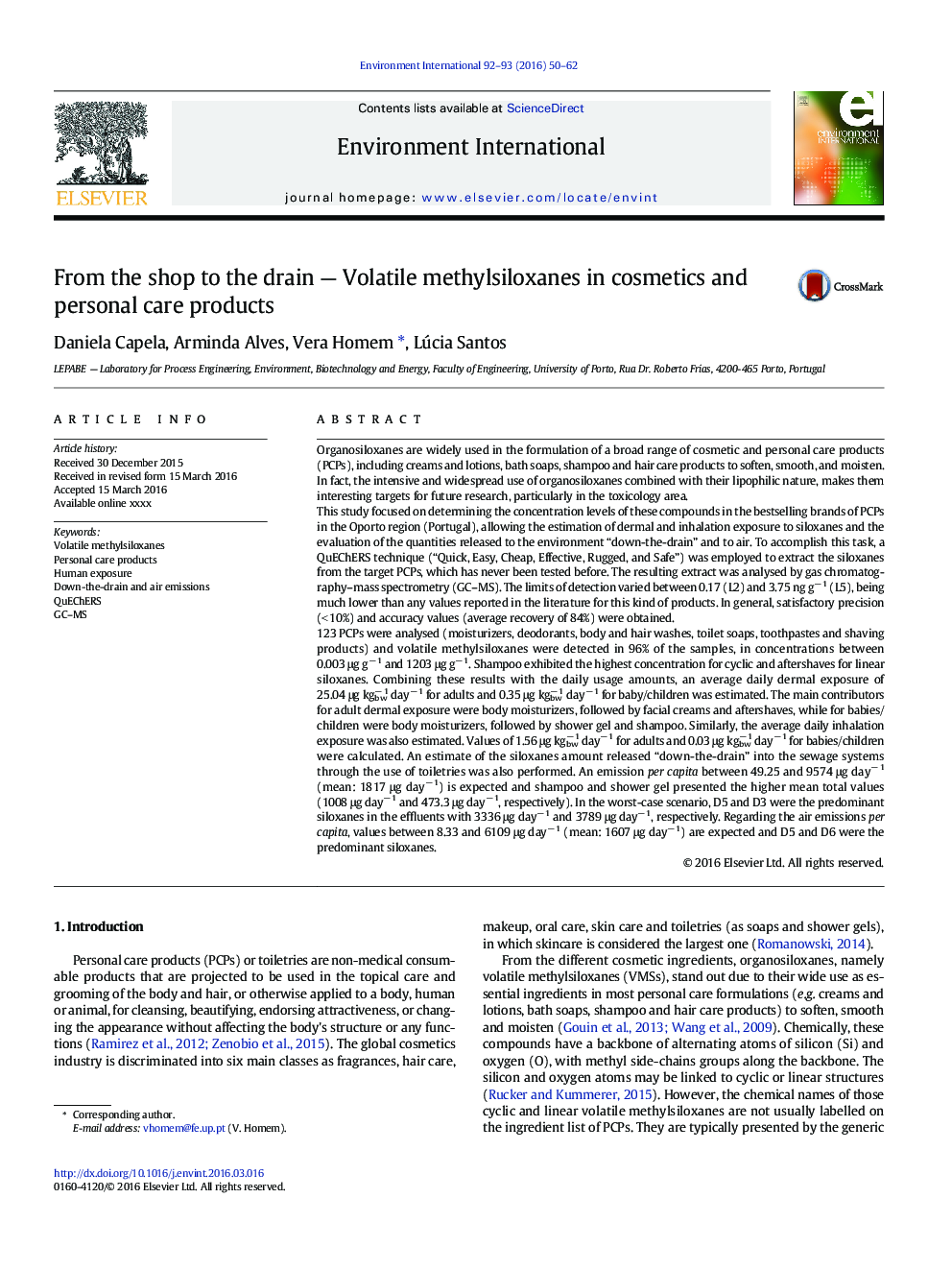| Article ID | Journal | Published Year | Pages | File Type |
|---|---|---|---|---|
| 6312950 | Environment International | 2016 | 13 Pages |
Abstract
123 PCPs were analysed (moisturizers, deodorants, body and hair washes, toilet soaps, toothpastes and shaving products) and volatile methylsiloxanes were detected in 96% of the samples, in concentrations between 0.003 μg gâ 1 and 1203 μg gâ 1. Shampoo exhibited the highest concentration for cyclic and aftershaves for linear siloxanes. Combining these results with the daily usage amounts, an average daily dermal exposure of 25.04 μg kgbwâ 1 dayâ 1 for adults and 0.35 μg kgbwâ 1 dayâ 1 for baby/children was estimated. The main contributors for adult dermal exposure were body moisturizers, followed by facial creams and aftershaves, while for babies/children were body moisturizers, followed by shower gel and shampoo. Similarly, the average daily inhalation exposure was also estimated. Values of 1.56 μg kgbwâ 1 dayâ 1 for adults and 0.03 μg kgbwâ 1 dayâ 1 for babies/children were calculated. An estimate of the siloxanes amount released “down-the-drain” into the sewage systems through the use of toiletries was also performed. An emission per capita between 49.25 and 9574 μg dayâ 1 (mean: 1817 μg dayâ 1) is expected and shampoo and shower gel presented the higher mean total values (1008 μg dayâ 1 and 473.3 μg dayâ 1, respectively). In the worst-case scenario, D5 and D3 were the predominant siloxanes in the effluents with 3336 μg dayâ 1 and 3789 μg dayâ 1, respectively. Regarding the air emissions per capita, values between 8.33 and 6109 μg dayâ 1 (mean: 1607 μg dayâ 1) are expected and D5 and D6 were the predominant siloxanes.
Related Topics
Life Sciences
Environmental Science
Environmental Chemistry
Authors
Daniela Capela, Arminda Alves, Vera Homem, Lúcia Santos,
